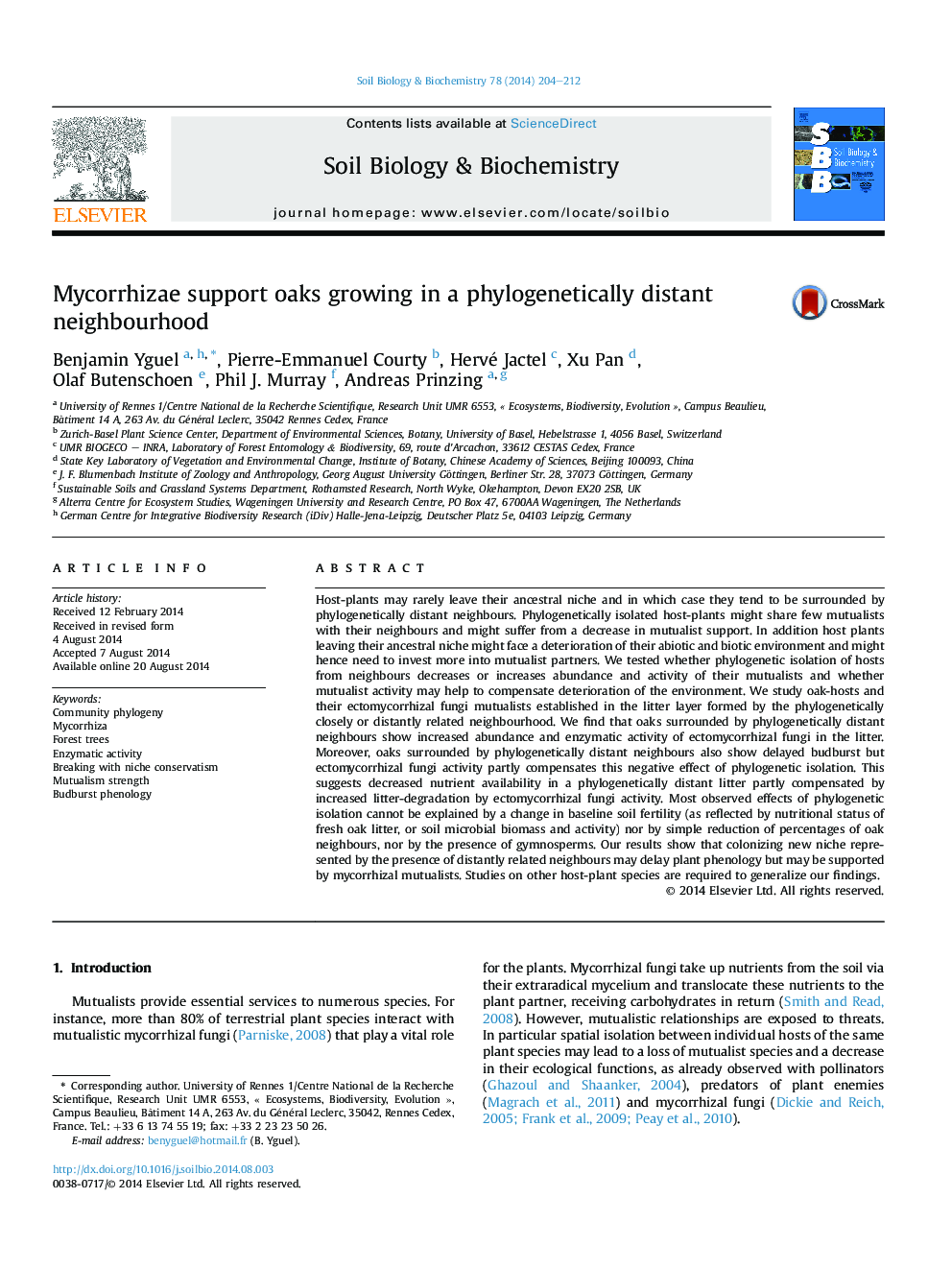| کد مقاله | کد نشریه | سال انتشار | مقاله انگلیسی | نسخه تمام متن |
|---|---|---|---|---|
| 2024586 | 1542606 | 2014 | 9 صفحه PDF | دانلود رایگان |

• How does phylogenetic isolation (PI) of oaks from neighbours affect ectomycorrhiza?
• We study ectomycorrhizal enzymatic activity related to budburst.
• PI increases abundance and enzymatic activity of ectomycorrhiza.
• PI also delays budburst, although this is partly compensated by enzymatic activity.
• Mycorrhiza seems to permit oaks to colonize an evolutionary novel neighbourhood.
Host-plants may rarely leave their ancestral niche and in which case they tend to be surrounded by phylogenetically distant neighbours. Phylogenetically isolated host-plants might share few mutualists with their neighbours and might suffer from a decrease in mutualist support. In addition host plants leaving their ancestral niche might face a deterioration of their abiotic and biotic environment and might hence need to invest more into mutualist partners. We tested whether phylogenetic isolation of hosts from neighbours decreases or increases abundance and activity of their mutualists and whether mutualist activity may help to compensate deterioration of the environment. We study oak-hosts and their ectomycorrhizal fungi mutualists established in the litter layer formed by the phylogenetically closely or distantly related neighbourhood. We find that oaks surrounded by phylogenetically distant neighbours show increased abundance and enzymatic activity of ectomycorrhizal fungi in the litter. Moreover, oaks surrounded by phylogenetically distant neighbours also show delayed budburst but ectomycorrhizal fungi activity partly compensates this negative effect of phylogenetic isolation. This suggests decreased nutrient availability in a phylogenetically distant litter partly compensated by increased litter-degradation by ectomycorrhizal fungi activity. Most observed effects of phylogenetic isolation cannot be explained by a change in baseline soil fertility (as reflected by nutritional status of fresh oak litter, or soil microbial biomass and activity) nor by simple reduction of percentages of oak neighbours, nor by the presence of gymnosperms. Our results show that colonizing new niche represented by the presence of distantly related neighbours may delay plant phenology but may be supported by mycorrhizal mutualists. Studies on other host-plant species are required to generalize our findings.
Representation of the statistical interaction effect between phylogenetic isolation and laccase activity of ectomycorrhizal fungi in April on budburst phenology based on the non-standardized regression coefficients of the variables in the interactive model. Phylogenetic isolation strongly delayed budburst in oak trees, but this was partly compensated by increased laccase activity of mycorrhiza.Figure optionsDownload as PowerPoint slide
Journal: Soil Biology and Biochemistry - Volume 78, November 2014, Pages 204–212